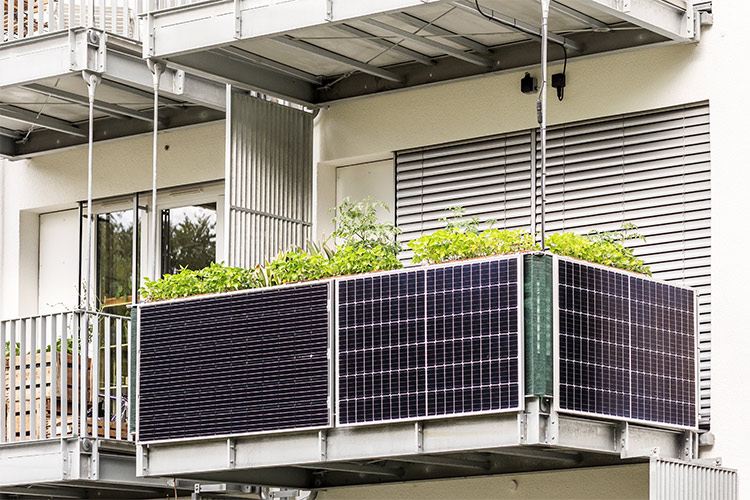

The solar balcony generates only a tenth of the power output of a rooftop solution, but is portable if the homeowner wishes to relocate
April 25, 2024 | Staff Reporter | Germany | Facilities Management

Plug-in solar systems on balconies are becoming increasingly popular among Germans living in smaller apartments. So far, more than 400,000 such systems have been installed, with over 50,000 units sold in the first quarter of this year alone.
The country has a strong solar culture. People want to be part of the energy transition that the world is focused on to reduce global emissions. When rooftop solar first arrived in the 2000s, the government encouraged its adoption by allowing it to feed extra energy into the grid and offering it a fixed price.
Subsidies continue to be offered on solar products to this date. The option to sell extra power to the grid means the equipment will pay for itself in the subsequent years. This has been the case with rooftop solar, but the solar balcony option is even simpler.
The solar balcony solution is similar to a rooftop solar system but much smaller. Instead of an array of panels, it consists of a maximum of two panels and connects directly to an electrical socket. The system’s energy output is a tenth of what a rooftop solution can produce, but the greatest advantage for users is the ease of use.
Unlike a rooftop system that requires professionals for installation, a balcony solar system consists of panels and a mounting structure, and the assembly can be completed by anyone using the instructions provided.
Houses that could not take the solar route due to heritage protection or shading issues can take the solar balcony route to generate their power. Even people who do not own the house can adopt the solution since its cost is subsidized, and they can take it with them when they move to another house.
Apartment buildings have yet to figure out how to distribute energy and benefits from a pooled rooftop solution, but the balcony solar solution addresses this issue too. As balconies get bigger, Germany is now considering allowing four-panel units.
The European Union encourages this new technology, but the member countries have responded differently to this push. Austria, France, Italy, and Poland are keen to adopt the solution. Still, countries like Belgium fear the impact of so many energy feeders on the grid. It prefers greater control over who supplies the power and when to avoid a grid collapse due to excessive electrical input.
Interestingly, the balcony solar solutions also have a storage option for those who do not wish to feed the electricity into the grid but use it themselves. Small families working during the day can monitor energy generation through an app and use it at night to reduce energy bills.